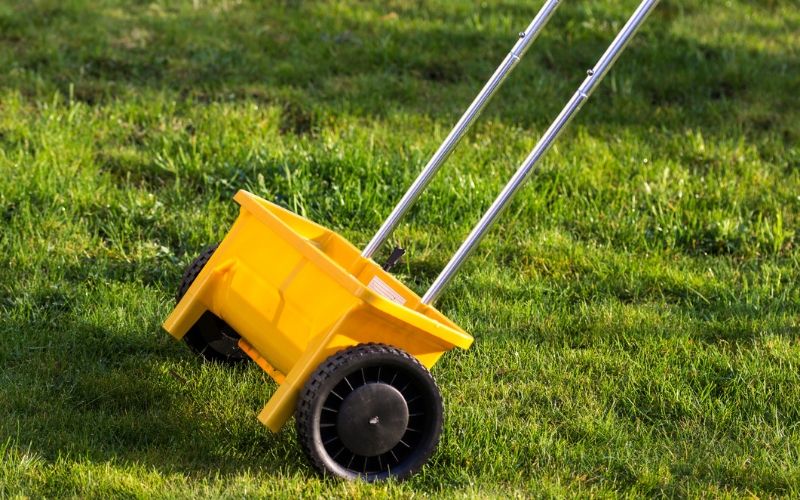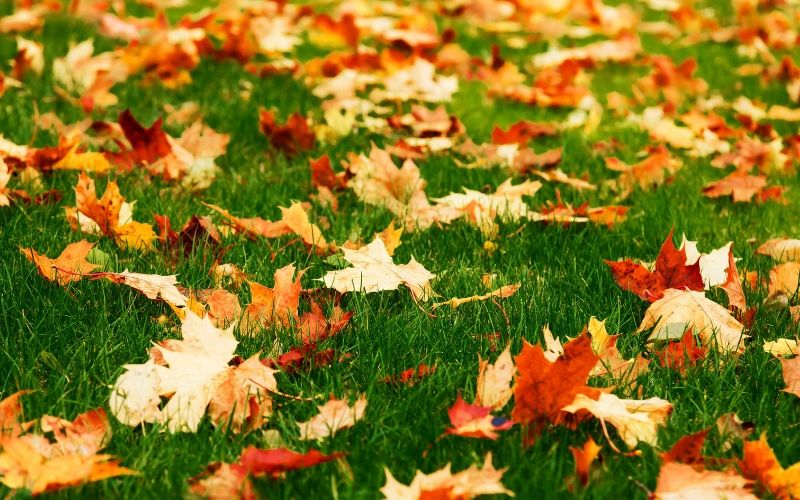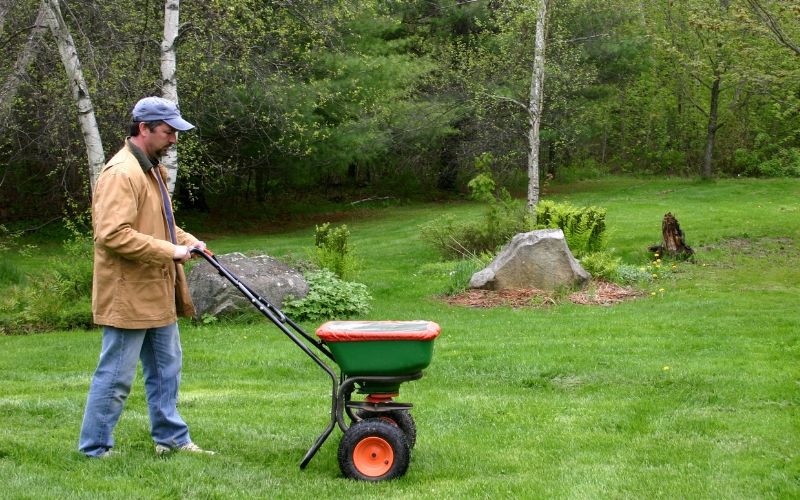Spring Lawn Care

Lawn Tips - Early Spring
- In areas with heavy snowfall, slowly melting snow piles or ice can smother the grass, which can encourage mold and diseases. As the weather warms, scatter snow piles with a shovel to encourage melting.
- Don’t walk on your lawn when it’s covered with frost; the grass loses its elasticity and the blades will break.
- Avoid heavy yard work in the spring until the soil dries out. Foot traffic can compact soggy soil and heavy raking can damage new grass shoots.
- Once the soil is dry, give your lawn a good spring cleaning by removing leaves and fallen debris. Gently “comb” the lawn with a rake to separate grass shoots, encourage growth, and discourage pests and diseases.
Fertilize
Fertilizing your lawn in the spring helps speed up the recovery process from winter damage, strengthens the roots, and increases nutrient uptake. Fertilize southern grasses with Milorganite in early April (after turf breaks dormancy) and around mid-May to Memorial Day for both southern and northern grasses. If you applied a granular pre-emergent that contained fertilizer, apply Milorganite two weeks later.
Overseed
Overseeding helps improve the overall health and appearance of an existing lawn. Fall is the ideal time for overseeding, but it can also be done in spring. Simply mix Milorganite® with grass seed appropriate for your climate at a 4:1 ratio: four (4) parts Milorganite to one (1) part grass seed by weight. Use a spreader to distribute the mix. If using an herbicide read the label carefully, most cannot be applied within 6-8 weeks of seeding.
Fill in Bare Patches
Large patches of bare soil are invitations for weeds to take over. Rake out any dead grass, top-dress with ½” compost, apply a mix of grass seed and Milorganite, gently rake the seed into the soil and water.
Aerate
Aeration leads to a healthier lawn by poking holes in the soil. It improves drainage, reduces weeds and soil compaction and helps prevent thatch. It is best to aerate southern grass between mid-spring and early-summer and northern grass in the fall. Aerating northern grasses in the spring can damage new grass shoots.
Weeds
Weed by hand, and when possible get the entire plant and root. If weeds have taken over, spot spray with a post-emergent herbicide. Gardening expert, Melinda Myers, shares eco-friendly weed control tips.
Top-dress
Top-dressing your lawn adds organic material to an established lawn. Top-dressing with compost builds a deeper root system and allows the soil to better retain water and nutrients. Spread ¼”– ½” of good quality, fine compost over bare spots or the entire lawn.
Dethatch
The mat of natural materials that collect in the lawn is called thatch. If your lawn has more than a one-inch layer of thatch, it creates a barrier to water, nutrients, and air from reaching the soil and grass roots. In early spring, for small areas, use a thatching rake. The best time to dethatch your entire lawn is in late spring for southern grass with a power dethatcher. Wait to dethatch northern grass until late summer or early fall when the grass is actively growing.
Mow: The 1/3 Rule
Proper mowing can strengthen your lawn’s resilience against pests and weeds. Only remove one-third of the grass blade in any one mowing to help your lawn thrive. It’s better to mow grass more often than remove more than one-third of the grass blade in one mowing. If your lawn has grown out of control, the one-third rule still applies. You’ll have to go back in a few days to mow off another one-third.
Lawn Articles

Five Steps to Spring Lawn Renovation
by Joe Lamp'l
Gardening Expert and Host of Growing a Greener World®







